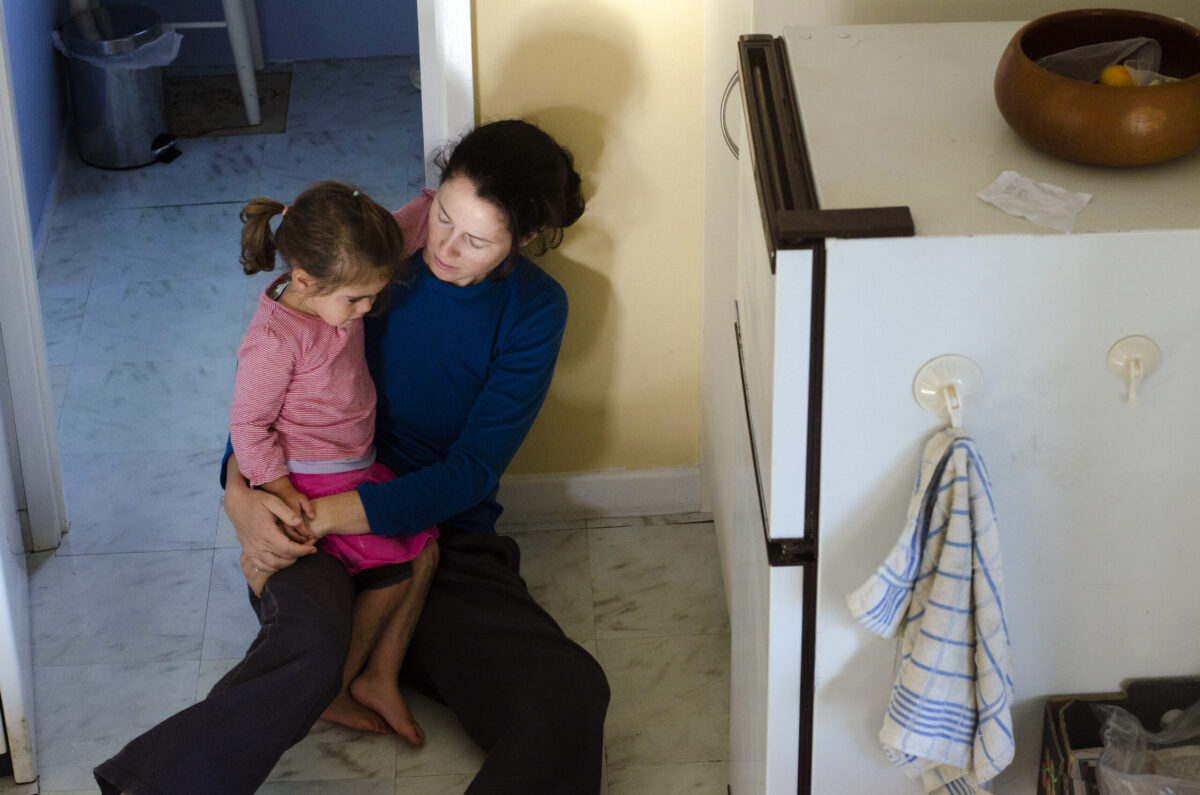However, understanding poverty in America can help create discussions and guide communities toward solutions. It can make us more sympathetic to our neighbors and drive us to do better to help our most vulnerable residents.
Get to know how Americans define poverty and what it means to live with less.
How Does the United States Define Poverty?
Before you can look at the number of people living in poverty and trends related to impoverished families, it’s important to set a clear definition of what poverty is. The United States Census Bureau bases poverty on annual household income and the size of the family within each home. If a family’s income falls below the minimum level set by the Bureau, then they are considered impoverished.
As the number of family members in a household increases, the threshold for poverty increases as well. This is because a parent caring for one child needs less to sustain themselves (for example) than a parent caring for three children and an elderly relative.
In 2019, the Census Bureau set the poverty level for one person living alone under the age of 65 at $13,300. This is the bare minimum that a person would need to get by to cover rent costs for one, food, clothing, and other needs. For two adults under the age of 65, this number increases to $17,120. For one adult and one child, the number is set at $17,622.
This doesn’t mean that a family living right over the poverty line is comfortable. Any household approaching this level is likely to struggle financially throughout the year.
The poverty level also changes by year. The Census Bureau releases numbers that are adjusted for inflation and the cost of living in the United States. That being said, this number is still an average. One number cannot account for the cost of living in New York compared to Omaha compared to Seattle compared to Los Angeles. This is meant to serve as a guideline and a barometer for poverty in the country.
Who is Impoverished in America?
Once you have a clear definition of poverty, you can evaluate who falls under this grouping and identify trends based on demographics and behavior. Using data from the Census, Poverty USA was able to create a graphic reporting statistics based on various groups of people in 2018.
- 16.2% of children (11.9 million kids) lived in poverty in 2018. Almost 10% of seniors fell under this category
- While 10.1% of white people fall under the poverty threshold, 17.6% of Hispanic Americans, 20.8% of Black Americans, and 25.4% of Native Americans are considered impoverished.
- The poverty rate for single-parent families with no wife present is 12.7% but the rate for single-parent families with no husband present is 24.9%.
These numbers highlight how gender, race, and age play key factors in the ability to secure income and maintain a comfortable lifestyle in modern America.
The COVID-19 Pandemic Will Increase Poverty Numbers
In most years, you can look at poverty trends as a reflection of the economy as a whole. If employment numbers decrease and consumer confidence grows, then it is likely that poverty numbers also decreased. However, the Coronavirus pandemic in 2020 created dramatic upheavals in employment and lead to the deaths of hundreds of thousands of Americans. This has left families scrambling to find work – or to enter the workforce after a breadwinner passes.
According to a study by Columbia University, eight million Americans entered poverty between May and September of 2020, bringing the total number of Americans living in poverty to 55 million. In September alone, the poverty rate increased from 15% of the population to 16.7%, particularly affected families of color.
Despite the fact that cities are opening up during the Coronavirus pandemic, many families still don’t have enough to make ends meet. Landlords followed the stays on evictions during the spring but many states ended these protections over the summer. Families that had small retirement accounts or nest eggs in savings spent that money this year and are now just scraping by. The CARES Act provided each family with at least $1,200 and an added unemployment check of $600 per week, but that money has since run out and the checks have stopped coming – but the bills haven’t.
Poverty Looks Different Across America
While defining poverty is good for counting families and understanding the number of people affected each year, it doesn’t really describe what it means to be impoverished. Not having money – or making below what is sustainable – has reaching impacts across a community.
- Living in poverty means being “food insecure,†or not knowing where your next meal will come from. It means empty refrigerators and hungry summers when there aren’t school lunches to tide kids over.
- Living in poverty means hot summers and cold winters as families can’t afford the electricity to keep an air conditioner or heater running.
- Poverty means not having internet access to attend virtual school during the pandemic or not having a computer or phone to apply for jobs and respond to calls for interviews.
- Poverty creates a dependence on public transit regardless of whether the city has a reliable bus and train infrastructure or not. This can limit a family’s ability to get groceries, attend doctor’s appointments, or make it to work on time.
These are just a few examples of what it means to be poor in America. In the Tampa Bay area, 21.8% of residents live below the poverty level. Many of our friends and neighbors work long hours and multiple jobs to make ends meet, while still coming home to hungry kids and overdue bills. Living in poverty means constantly fighting to survive the next week and the next month.
What Can We Do?
There is no easy solution to helping families living in poverty, but awareness is an important first step. By reading this and learning the staggering numbers of impoverished Americans, you can truly realize how many kids, adults, and families are just barely getting by.
At Family Resources, we work to help communities support their neighbors – particularly in regard to helping vulnerable youth. While the holidays are over for 2020, you can still learn about ways to help homeless youth who have been kicked out of their homes or who have run away from dangerous situations. Additionally, you can learn what it means to be homeless and how kids and teens hide their poverty from friends and teachers. Finally, be mindful of the effects of the pandemic and how teens are more likely to run away as unemployment rises and people are told to stay home.
If you want to support poor and impoverished families in our area, please consider donating to Family Resources. We provide support to homeless youth who are living on the street or couch surfing from one house to the next. We also provide healthy meals to home daycare providers so kids can get nutritious and filling lunches daily. With your support, we can build up those who need our help the most.
One person can’t eliminate poverty in America. But hundreds of small actions from people across the country can help vulnerable families and neighbors.



